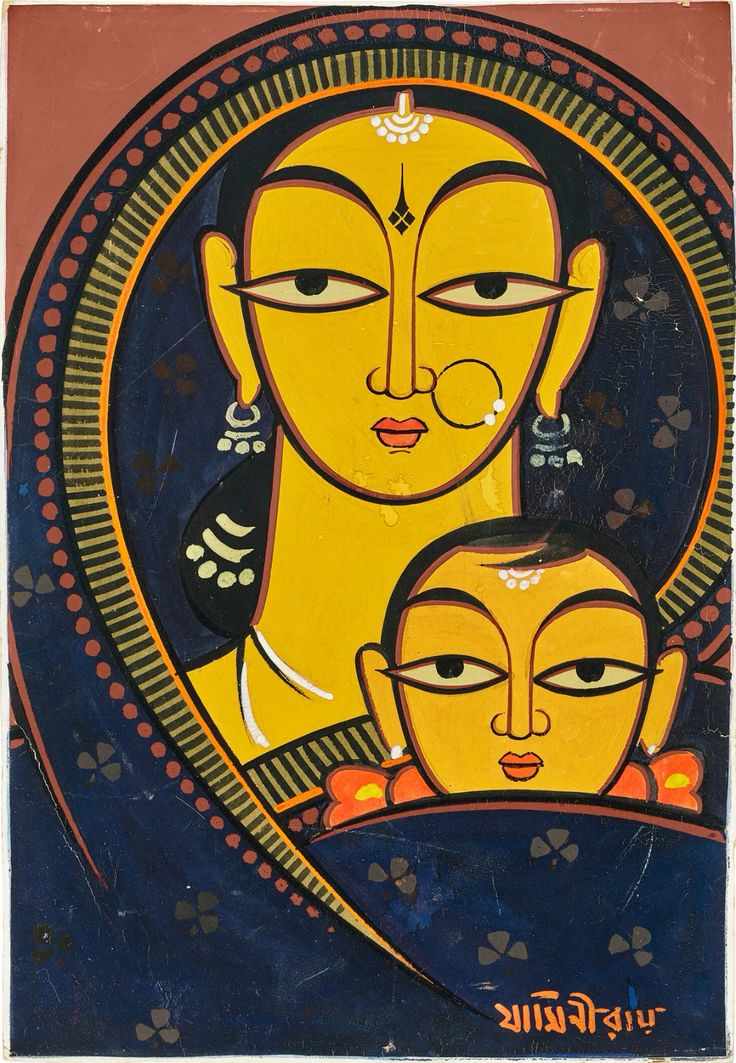
We would have witnessed a painting having a 3-dimensional effect with shimmering gold foil, embellished with precious stones and Swarovski crystals done on wooden boards which portrays Hindu deities, characters and scenes from the mythology.
Yeah! We are talking about Tanjore Paintings also known as PALAGAI PADAM from its local language Tamil as” Paintings on the Wooden Plank”. Tanjore Paintings originated from Thanjavur, a city in Tamil Nadu around the 17th century, somewhere during the era of the Chola dynasty and the Nayak period under the patronage of the region’s Maratha rulers.
To turn the pages of history, this classical art form from southern India flourished during the 17th Century CE under the most famous Thanjavur Maratha ruler of that time, Maharaja Serfoji II Bhonsle, who was passionate about the art. He had a substantial number of paintings done of deities and portraits of Maratha rulers to be placed in Maratha palaces.
It was the Raju or Raja community of Trichy and Thanjavur & Naidu community of Madurai who conceived the Thanjavur style paintings. The very common paintings we would have come across are Krishna, Vishnu, Ganesha and Lakshmi with the surrounding elements such as temple arches, birds, animals, trees etc..
HOW'S TANJORE PAINTING DONE?
It’s a process of love and dedication to bring out a stunning, glittering, painting of Tanjore Art, isn’t it a treat to the eyes to behold a painting adorned with real gold, pearls, precious stones and gems on the gods and goddesses, It looks like you are in a surreal feeling of witnessing the true form of God.
As said above, it should be a very meticulous process and it is!
The Artists first prepare the base, as it's called Palagai Padam – Painting on the wooden plank, so the base is made of wood from the jackfruit tree or teak. The wooden base is cut to the required size and later a layer of gum is applied over it which is originally made using tamarind seed. After that, a cloth is pasted on the wood and left to dry for a period.
Once dried, a paste of glue and chalk powder or Muck powder (Locally called Makku or Sukkan), known as gesso (these days), is applied on the cloth, the same is used to create that 3D effect for painting.
Once the gesso dries, the raw surface is smoothened using a stone and polished using an emery sheet.
Now the canvas is ready, It is on this surface the artist draws the sketch of the painting, attention to every detail is given here to its contours, and placement of pillars, drapes, and mandapams, to give it an embossed feel. The main subject is placed in the centre, big and large being highlighted. The beauty of Tanjore art is the representation of a single deity in a painting.
On this embossed area, the 22-carat gold foil that comes from Rajasthan and Gujarat is applied and then cut to the required shape for that pure shine to last years. Then the placement of gems and stones was done according to the design.

Traditionally, natural colours like vegetable and mineral dyes are used here to paint, dark brown or red colours are used for the outlines in the Tanjore paintings. The characterization of murals and figures in the paintings were the classics, like having round faces, curved bodies, almond-shaped eyes, and typical hairstyling.
Though the art has a 3D effect, the artist would do the contouring and shading to bring a sense of depth with the lighting and perspective conventions.
Different Tanjore Art Themes and Motifs!
The themes and motifs of the Tanjore paintings are diverse with the different rulers during 1600, like I had mentioned it was during the Cholas era, the Nayakas, Thanjavur Marathas
But today what we express admiration for the art is that it evolved under the Vijayanagara Empire, when these people were dissolved & drifted to Thanjavur, the Nayaka rulers took the further hold of this art, as a static 2 D, from round to oval faces, almond eyes to round eyes, from curved bodies to sleek bodies of the Hindu folklore adorned in heavy jewellery like the influence of Deccani paintings.
The introduction of portraiture by the Marathas marked a significant evolution in the Tanjore art style, particularly with the incorporation of new mediums such as ivory and Chinese reverse glass paintings. Influenced by European artistic principles, artists began to explore lighting, perspective, and the inclusion of secondary characters in their compositions. This shift led to more dynamic representations of rulers, noblemen, and courtiers in formal settings, with elaborate curtain backdrops and furnishings like tables and chairs becoming central elements in Tanjore art during the late 17th and 18th centuries. However, despite these innovations, the art retained many traditional themes and iconographic elements, indicating a gradual departure from established conventions.
Talking about the motifs, Motifs are the most vital elements in the artform, that is what makes the artform identifiable and unique. In Tanjore painting the typical motifs were of course the Hindu deities, saints and subjects from Hindu mythology, but the distinctive ones were,
YALI – A mythical creature that is considered more powerful than a lion and protects the temple.
KAASU MALAI – A chain made up of gold coins - medallion-like pendants.
PRAPBHAVALI – The golden border with arches, drapes, and arches made of flowers.

While Tanjore painting has evolved over the centuries, incorporating new themes and influences, it celebrates its roots through depicting divine figures and royal patronage. As contemporary artists explore innovative expressions while honouring the past, Tanjore painting endures as a testament to the region's artistic legacy, captivating audiences and preserving its significance for future generations making it a cherished part of India’s artistic heritage that will be appreciated for years to come.









Write a comment ...